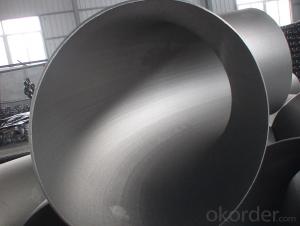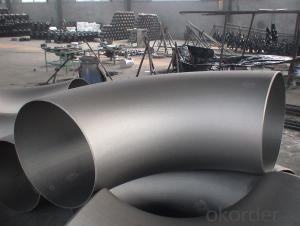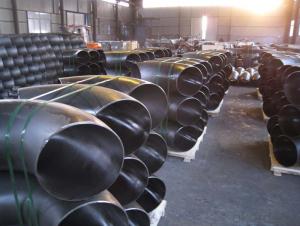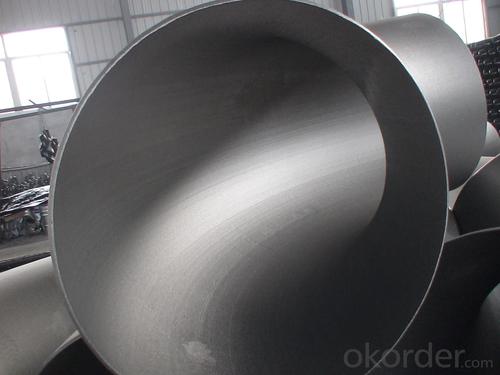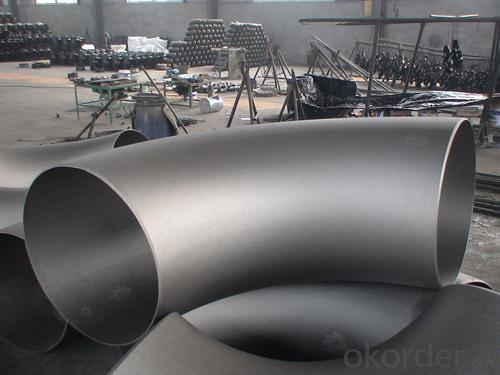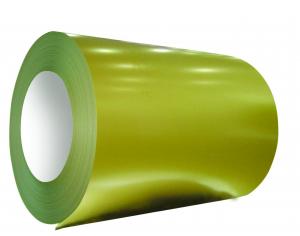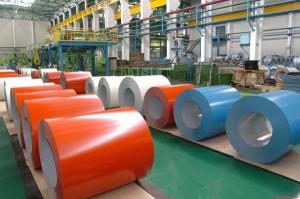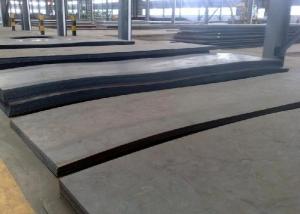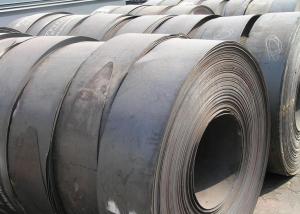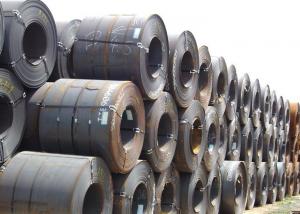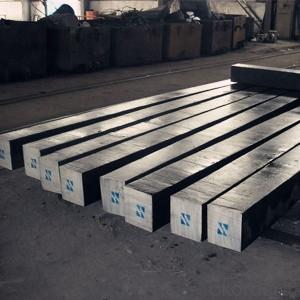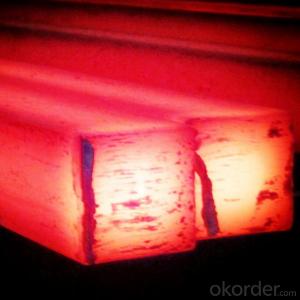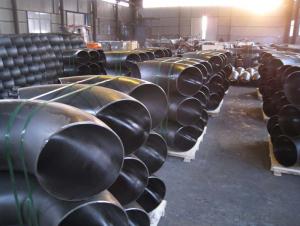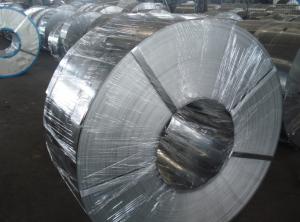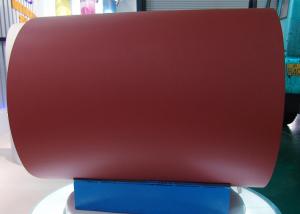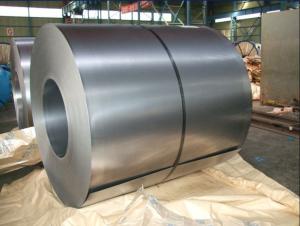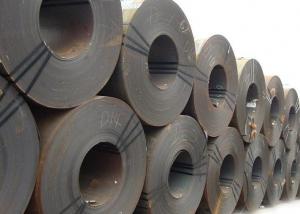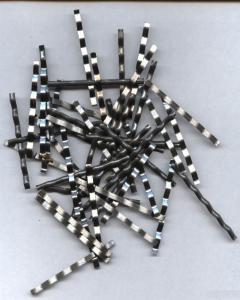Carbon steel pipe fittings BEND 1/2''
- Loading Port:
- China Main Port
- Payment Terms:
- TT OR LC
- Min Order Qty:
- -
- Supply Capability:
- -
OKorder Service Pledge
OKorder Financial Service
You Might Also Like
Pipe fitting is the occupation of installing or repairing piping or tubing systems that convey liquid, gas, and occasionally solid materials. This work involves selecting and preparing pipe or tubing, joining it together by various means, and the location and repair of leaks.
Pipe fitting work is done in many different settings: HVAC, manufacturing, hydraulics, refineries, nuclear-poweredSupercarriers and Fast Attack Submarinescomputer chip fab plants, power plant construction and other steam systems. Pipe fitters (sometimes called simply "fitters") are represented in the USA and Canada by the United Association of Journeymen and Apprentices of the Plumbing and Pipe Fitting Industry of the United States and Canada.
Fitters work with a variety of pipe and tubing materials including several types of steel, copper, iron, aluminium, and plastic. Pipe fitting is not plumbing; the two are related but separate trades. Pipe fitters who specialize in fire prevention are called Sprinklerfitters, another related, but separate trade.
Materials, techniques, and usages vary from country to country as different nations have different standards to install pipe.
Elbow are an English alternative rock band consisting of Guy Garvey (vocals, guitar), Richard Jupp (drums, percussion), Craig Potter (keyboards, piano), Mark Potter (guitar, backing vocals), and Pete Turner (bass guitar, backing vocals). They have played together since 1990, adopting the Elbow band name in 1997, and have released six studio albums: Asleep in the Back (2001), Cast of Thousands (2003), Leaders of the Free World (2005), The Seldom Seen Kid (2008), Build a Rocket Boys! (2011), and The Take Off and Landing of Everything (2014). All of their studio albums, as well as B-sides compilation Dead in the Boot (2012), have placed in the top 15 of the British album chart and seven of their singles have placed in the top 40 of the British singles chart.
In 2008 Elbow won the Mercury Music Prize for their album The Seldom Seen Kid, and in 2009 they won the Brit Award for Best British Group In 2012 they released "First Steps", the BBC theme for the 2012 London Olympics
Specifications
Standard: ASTM A234 WPB, JIS, DIN, EN, GOST
Use for Oil, Gas, Subwatering act.
45/90/180 degree, LR/SR Elbow
ASTM A234 WPB ELBOW :
| ||||||||
| we are manufacturer for carbon steel pipe and fittings,like 45deg,90deg,180deg,L/R OR S/R,bend , | ||||||||
| equal or reducing tee, CON reducer, ECC reducer, pipe cap,flange. | ||||||||
| CON AND ECC REDUCER: CARBON STEEL,STAINLESS,STELL,ALLOY STEEL | ||||||||
| NOMINAL DIAMETER | BIG OD1 | SMALL OD2 | HEIGHT(MM) | |||||
| MM | SERIES A | SERIES B | SERIES A | SERIES B | 51-711 | |||
| 25*15--1500*1400 | 33.7-1524 | 32-1520 | 21.3-1420 | 18-1420 | ||||
| MATERIAL: A234WPB,A283,A105,A53,A106,API5L | ||||||||
| STANDARD: ASTM/ANSI,DIN,ISO,GB,JIS,BS ,GOST | ||||||||
| OTHERS: | ||||||||
| 1. Special design available according to requirement | ||||||||
| 2. All the production process are made under the ISO 9001:2000 strictly. | ||||||||
- Q: How are steel products used in the manufacturing of appliances and consumer goods?
- Steel products are used in the manufacturing of appliances and consumer goods due to their durability, strength, and versatility. They are commonly utilized in components such as frames, casings, and structural supports, providing stability and robustness to the final product. Steel's resistance to corrosion also ensures a longer lifespan for appliances and consumer goods. Additionally, steel can be molded and shaped into various forms, allowing manufacturers to create intricate designs and meet specific functional requirements. Overall, steel products play a crucial role in enhancing the performance, reliability, and aesthetics of appliances and consumer goods.
- Q: How is steel used in the manufacturing of communication towers?
- Steel is commonly used in the manufacturing of communication towers due to its strength, durability, and flexibility. It provides the necessary structural support to withstand extreme weather conditions and support the weight of antennas and other equipment. Additionally, steel's malleability allows for easy customization and modification of towers to meet specific height and design requirements.
- Q: What are the uses of steel in the manufacturing of household appliances?
- Steel is commonly used in the manufacturing of household appliances due to its durability, strength, and resistance to corrosion. It provides a sturdy framework for appliances such as refrigerators, ovens, and washing machines, ensuring their longevity and reliability. Additionally, steel's malleability allows for intricate designs and shapes, enabling manufacturers to create aesthetically pleasing appliances. Its ability to conduct heat efficiently also makes it suitable for applications such as cookware and heating elements.
- Q: How are steel forgings used in the production of mining equipment?
- Steel forgings are commonly used in the production of mining equipment due to their superior strength and durability. They are used to create various components such as gears, shafts, and hydraulic cylinders, which are essential for the heavy-duty operations in the mining industry. The forging process ensures that the steel is shaped into the desired form, enhancing its structural integrity and resistance to wear and tear. Overall, steel forgings play a crucial role in ensuring the reliability and longevity of mining equipment, enabling efficient and safe mining operations.
- Q: What are the different types of steel scaffolding systems?
- There are several types of steel scaffolding systems, including frame scaffolding, tube and clamp scaffolding, system scaffolding, and suspended scaffolding. Frame scaffolding consists of vertical frames connected by horizontal and diagonal braces, providing a stable structure. Tube and clamp scaffolding uses steel tubes and clamps to create a flexible and adjustable system. System scaffolding utilizes prefabricated components, such as modular frames and braces, for quick assembly and versatility. Suspended scaffolding is suspended from the roof or other elevated structure, allowing workers to access hard-to-reach areas.
- Q: What are the applications of steel gratings?
- Steel gratings have a wide range of applications due to their durability, strength, and versatility. They are commonly used in industrial settings as platforms, walkways, and stair treads, providing a safe and secure surface for workers. Steel gratings also find application in the construction industry as structural components, allowing for efficient drainage and ventilation. Additionally, they are utilized in transportation infrastructure, such as bridges and highways, to enhance safety and prevent accidents.
- Q: What are the different types of steel scaffolding and support systems available?
- There are several different types of steel scaffolding and support systems available, including tube and clamp scaffolding, system scaffolding (such as cuplock and ringlock scaffolding), frame scaffolding, and shoring systems. Each type has its own unique features and advantages, allowing for various applications and requirements in construction and maintenance projects.
- Q: What are the applications and uses of steel products in various industries?
- Steel products have a wide range of applications and uses in various industries. In the construction industry, steel is extensively used for building structures, bridges, and infrastructure due to its strength and durability. It is also commonly used in the automotive industry for manufacturing car bodies and structural components. Additionally, steel is essential in the manufacturing of machinery, tools, and equipment across various sectors. Its versatility and ability to be fabricated into different shapes make it ideal for creating pipes, wires, and electrical appliances. Moreover, steel is widely used in the energy sector for power generation and transmission, as well as in the packaging industry for cans, containers, and packaging materials. Overall, the applications of steel products are vast and crucial in numerous industries due to their strength, versatility, and reliability.
- Q: What are the different types of steel forgings and their uses?
- There are several different types of steel forgings, including carbon steel forgings, alloy steel forgings, stainless steel forgings, and tool steel forgings. Each type of steel forging has unique properties that make it suitable for specific applications. Carbon steel forgings are commonly used in construction, machinery, and automotive industries, while alloy steel forgings are preferred for their strength and durability in aerospace and oil and gas sectors. Stainless steel forgings are highly resistant to corrosion and are widely used in food processing, medical equipment, and marine applications. Tool steel forgings are known for their high hardness and are commonly used in the manufacturing of cutting tools, dies, and molds.
- Q: What are the different types of steel plates and sheets available?
- There are several types of steel plates and sheets available, including hot rolled steel plates, cold rolled steel plates, galvanized steel plates, stainless steel plates, and alloy steel plates. Each type has its own unique properties and uses in various industries.
Send your message to us
Carbon steel pipe fittings BEND 1/2''
- Loading Port:
- China Main Port
- Payment Terms:
- TT OR LC
- Min Order Qty:
- -
- Supply Capability:
- -
OKorder Service Pledge
OKorder Financial Service
Similar products
Hot products
Hot Searches
Related keywords
